The Waylanders review
The central premise of The Waylanders is an interesting one. At a certain point early on, your protagonist is brought back from the brink of death and finds themselves split across two time periods. On one hand, you’re in the ancient past, Dark Ages Britannia; on the other, you’re adventuring through Medieval Britain some centuries later.
As you quest through each time period, you’ll make decisions that affect both, and cultivate relationships with a colourful cast of human and non-human characters. As such, the story itself is always compelling, with enough mystery and mystique to keep you invested. It’s also not a time period usually plumbed in games, despite the rich mythos of Dark Age Britain and Ireland. There are tales galore of ancient heroes and devious monsters, of the Tuatha DeDannan and the terrifying Formorians. Modern games are so hung up on Romans and Vikings that they forget that other cultures have deep and powerful legends, too.
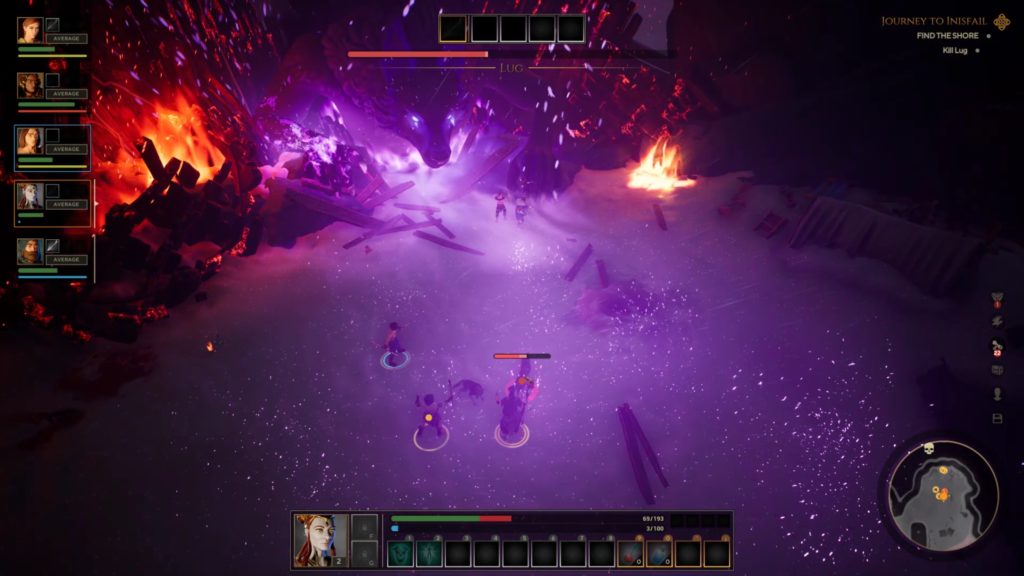
The Waylanders began life as a Kickstarter project some time ago, and I previewed it when it first entered Early Access on Steam in 2020. I’ve waited with some anticipation to experience the full release as, despite some teething issues, The Waylanders showed real promise even back then. Now I’ve spent some time with the full game, I’m a little torn. Some elements have come to fruition, while others haven’t. The result is uneven to say the least.
For a start, it doesn’t seem to know which tone to settle on. While the broad strokes of the story are great, the writing is all over the place. It’s set primarily in ancient Britain, for a start, so characters with strong American accents sound odd. As do the repeated uses of words like “asshole” and “twat”. I’m all for colourful dialogue, but this is painfully anachronistic. At one point early on you meet a character from a race of one-eyed cannibals who cheerfully proclaims herself to be the “Underworld Tour Guide”.
Maybe it’s nitpicking, but nothing shatters the immersion like a guy in a toga dudebroing his way through a swordfight, calling everyone an asshole. It’s symptomatic of a game at odds with itself. One moment characters are bickering like a low-budget sitcom, the next they’re on their knees weeping at the cruelty of the world because someone carked it. In cutscenes, enemies die in a single stroke; during the actual combat every enemy is a damage sponge. It’s very odd.
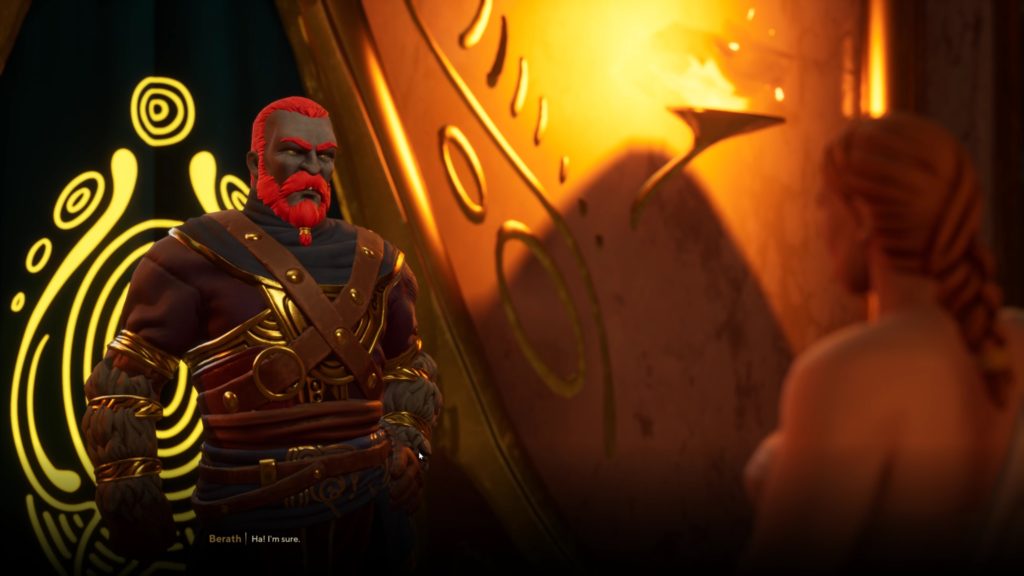
This is effectively a tactical RPG like Dragon Age: Origins. Your character is created from a bunch of archetypes, and can be a fighter, rogue, or magic-user with various sub-classes of each. You also pick a race, gender, and backstory. The characters you meet are pre-made, with their own skills and abilities baked in.
Which brings us nicely to the biggest issue I have with The Waylanders: the combat. The USP here is the formation system. By selecting a battle formation (which some characters begin with and others need to unlock), you’ll command your party to fight as one. For each formation you’ll receive new attacks and abilities, increased health and defence. It’s effective against bosses, and looks fairly impressive in practice.
Unfortunately, the system is somewhat fiddly, and actually prevents you from using each character’s unique abilities during a fight. If you want your healer to be healing, you’ll need to leave them out of the formation and thus vulnerable. The combat is also frustratingly skewed against you. On the standard difficulty enemies will obliterate you fast. In the early game, you’ll have one character able to heal (two, if you make your protagonist a healer), with one measly heal spell. It heals around 10% of their health and has a 7-second cooldown.
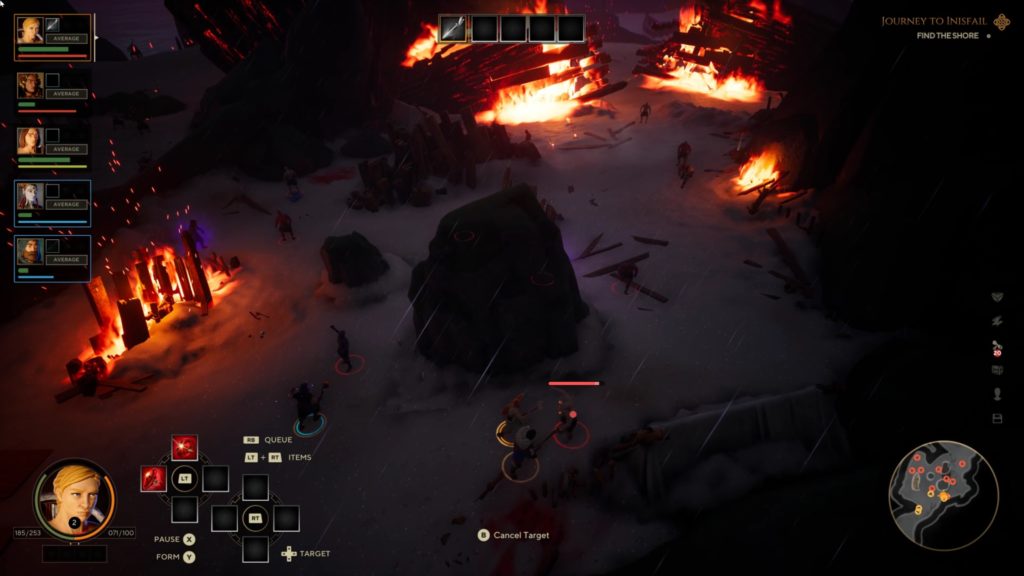
Later you can improve this and find health potions, of course, but you’ll always be fighting to keep people alive. Which is fine, to an extent. Challenge is good. And you’re encouraged to use the tactical pause, like Dragon Age, to queue attacks and spells. The problem is that the enemy chew through your health in minutes. You’re almost always outnumbered, and the awkward camera and character selection doesn’t make it easy to keep track of everyone.
If you’re healer goes down, you’re probably going to lose the fight. Trying to position a tank character at the front proves difficult since fights happen on the standard map and are often in the open. Skills and abilities fizzle and pop with pretty lights and little impact, and on the whole battles become an exercise in frustration and attrition. You don’t heal after a fight either, and must stand there and manually heal each party member with potions or laborious spell-casting like they’re kids all lined up outside the nurse’s office waiting for a plaster.
When I lost to the first boss twice, I assessed the difficulty. Standard difficulty is the second hardest out of five, so I reasoned that was maybe why. I dropped it, and re-attempted the fight. It made no difference. Nor did the next setting, or the next. The only one that did was the easiest. But instead of rebalancing the fight, it just makes your party invincible. They hit 1 HP and become unstoppable tanks that never fall. You don’t even need to heal them between fights. It renders you healers actually useless, and removes the challenge completely. It doesn’t make fights faster, however, as enemies still take an age to kill.
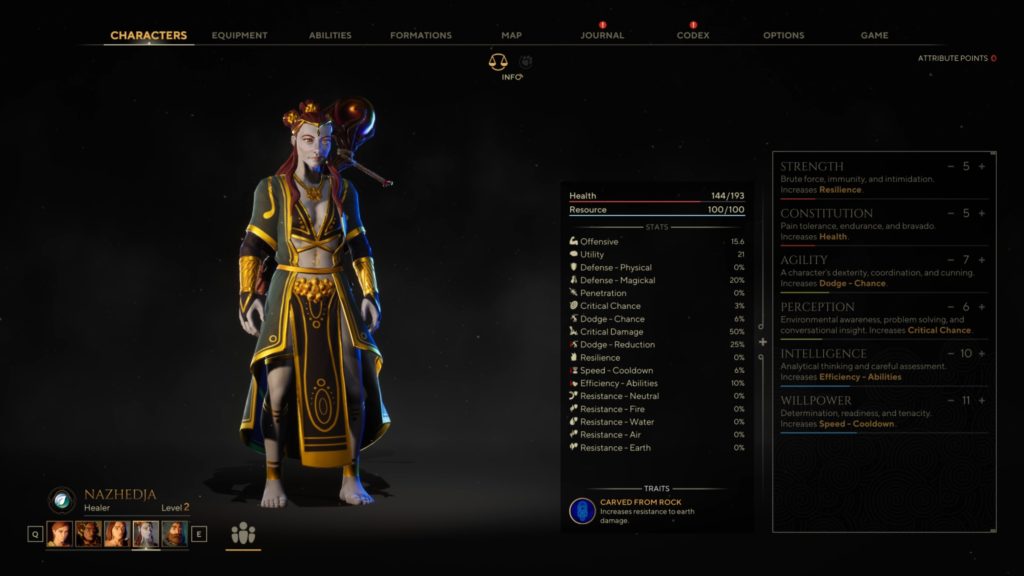
Maybe I’m missing something. Maybe I’m just reaching a point where I’m sick of games that are deliberately punishingly hard for the sake of it. In a Souls game or a roguelike, enhanced difficulty is part of the core loop, and is rewarded with shortcuts, permanent upgrades, incremental progress. When you fail in The Waylanders you simply reload a save and try again. Death doesn’t teach you anything, or reward you with anything. You try, you die, you reload, hammering your head against it like a sparrow trying to headbutt through a brick wall.
With this uneven challenge comes a bizarre fear of combat. I never felt the rush to charge in, like in something like Dragon Age, ready to use everything at my disposal to defeat a tough opponent. I just rolled my eyes as my stomach sank, ready to try and try again until I eventually either fluked my way through the fight, or gave up and dropped the difficulty to tank through it.
Victory rewards you with XP and loot, such as armour, weapons and trinkets. Quite oddly, some of the armour is woad tattoos, which leaves male and female characters topless. I’ve never tested the defensive capability of a millimetre of dried blue paint, but it seems unlikely it would stop an arrow or 50lb axehead. In some games I’d ignore that (Kratos never bothered to cover those burly biceps, after all), but in The Waylanders it’s just another incongruity that irritates me.
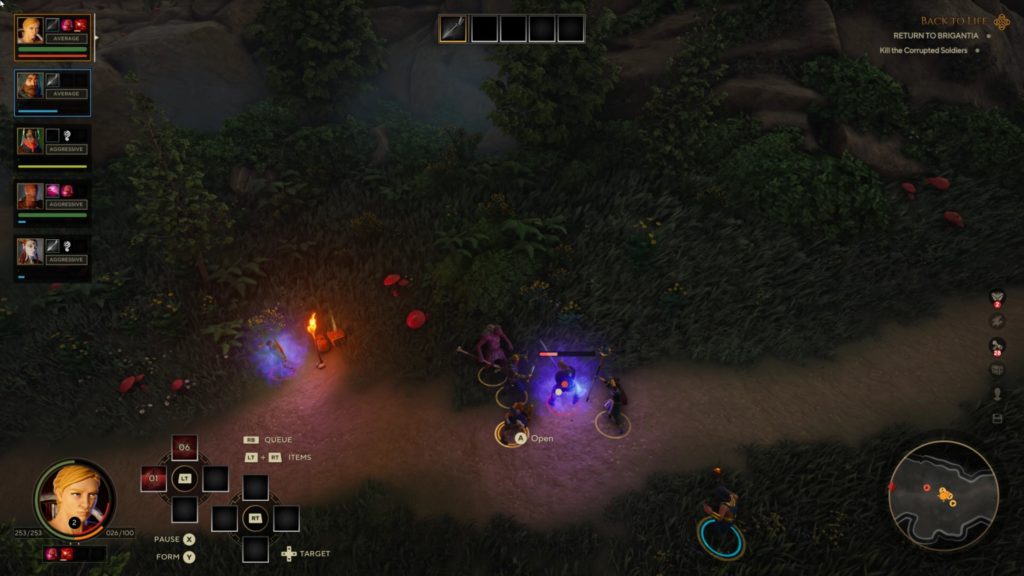
I couldn’t shake the feeling that The Waylanders needs more time. 18 months in early access might seem a long time, but it doesn’t feel ready. The controller integration is glitchy (it resets the Y-Axis every time you load a new area), the camera is a skittish bitch that tends to hide behind trees and long grass when you need it overhead. And the combat lacks impact and impetus, with spells and abilities bursting with all the beauty and effectiveness of slightly damp fireworks.
The Waylanders is a difficult game to recommend. It may appeal to those who seek a hardcore challenge, and those who can look past the iffy writing and uneven pacing may find an adventure worth undertaking. But the combat in particular needed more time in the oven, and the rest of the game doesn’t do enough to make up for it.




